Behringer 150 Ring Mod/Noise/S&H/LFO Handleiding
Behringer
Synthesizer
150 Ring Mod/Noise/S&H/LFO
Bekijk gratis de handleiding van Behringer 150 Ring Mod/Noise/S&H/LFO (13 pagina’s), behorend tot de categorie Synthesizer. Deze gids werd als nuttig beoordeeld door 60 mensen en kreeg gemiddeld 4.7 sterren uit 30.5 reviews. Heb je een vraag over Behringer 150 Ring Mod/Noise/S&H/LFO of wil je andere gebruikers van dit product iets vragen? Stel een vraag
Pagina 1/13

Quick Start Guide
(EN) Controls
(1) EXT SIG X/NOISE jack routes audio signals or noise into the
ring modulator. The audio signal or noise coming in through
the EXT SIG X/NOISE jack is combined with and modulated
by the carrier signal routed into the EXT SIG Y/LFO jack.
(2) EXT SIG Y/LFO jack routes the carrier signal into the
ring modulator. The carrier signal can be in the audio
range, such as a 500 Hz sine wave, or a signal from
Low Frequency Oscillator (LFO).
(3) R.M OUT jack sends out the nal ring modulator signal.
(4) PINK output jacks oer dual white pink noise outputs for
use other modules.
(5) WHITE output jacks oer dual white noise outputs for use
with other modules.
(6) EXT SIG input jack routes external signals into the S&H
circuit for processing. Use the EXT/LFO/NOISE switch to
optimize the EXT SIG input for dierent types of signals.
(1)
(3)
(4)
( )(8)(6) (7) 10
(2) (9)
(14)
(16) (17) (19)
(20)
(13)
(12)
(18)
(15)
(11)
(5)
(7) EXT/LFO/NOISE sliding switch optimizes the EXT SIG for use
with control signals (EXT), signals from a Low Frequency
Oscillator (LFO) or noise signals (NOISE).
(8) CLOCK OUT jack sends out a clock signal generated inside
the S&H circuit.
(9) CLOCK RATE slider controls the internal clock signal’s rate
before the clock signal is routed out through the CLOCK
OUT jack.
(10) S&H OUT jack sends out the nal S&H (Sample & Hold)
signal over cables with 3.5 mm TS connectors.
(11) LAG TIME slider can be used to smooth out the changes
between control voltage values as the slider is raised, similar
to a portamento or glide eect on a keyboard.
(12) EXT CLOCK IN input jack routes an external clock signal into
the S&H circuit.
(13) WAVEFORM knob selects between sine, triangle, square,
ramp and sawtooth waveforms for the LFO.
(14) FREQ RANGE sliding switch selects between high (H),
mid (M) and low (L) frequency ranges.
(15) TRIGGER jack allows a control voltage to trigger the LFO
waveform by resetting the amplitude to 0. The waveform
then returns to the original amplitude at a rate set by the
DELAY slider.
(16) FREQ slider ne-adjusts the LFO frequency within the range
chosen by the FREQ RANGE switch.
(17) DELAY slider controls the amount of time that elapses
between the beginning of a new note and the LFO’s
amplitude peak.
(18) FREQ CV IN input jack allows a control voltage to control the
LFO frequency in place of the FREQ slider.
(19) OUTPUT LEVEL sliding switch selects between a
full-strength LFO output signal (x1 setting) and a
1/10th-strength signal (x 1/10 setting).
(20) LFO OUT output jacks oer dual LFO outputs for use with
cables with 3.5 mm TS connectors.
150 RING MOD/NOISE/
S&H/LFO
Legendary Analog Ring Modulator/
Noise/S&H/LFO Module for Eurorack
V 1.0

Power Connection
The 150 RING MOD/NOISE/S&H/LFO module comes with the required
power cable for connecting to a standard Eurorack power supply
system. Follow these steps to connect power to the module. It
is easier to make these connections before the module has been
mounted into a rack case.
1. Turn the power supply or rack case power o
and disconnect the power cable.
2. Insert the 16-pin connector on the power cable into
the socket on the power supply or rack case. The connector
has a tab that will align with the gap in the socket, so it
cannot be inserted incorrectly. If the power supply does not
have a keyed socket, be sure to orient pin 1 (-12 V)
with the red stripe on the cable.
3. Insert the 10-pin connector into the socket on the back
of the module. The connector has a tab that will align
with the socket for correct orientation.
4. After both ends of the power cable have been securely
attached, you may mount the module in a case and turn
on the power supply.
Installation
The necessary screws are included with the module for mounting
in a Eurorack case. Connect the power cable before mounting.
Depending on the rack case, there may be a series of xed holes
spaced 2 HP apart along the length of the case, or a track that allows
individual threaded plates to slide along the length of the case.
The free-moving threaded plates allow precise positioning
of the module, but each plate should be positioned in the
approximate relation to the mounting holes in your module
before attaching the screws.
Hold the module against the Eurorack rails so that each
of the mounting holes are aligned with a threaded rail or
threaded plate. Attach the screws part way to start, which will
allow small adjustments to the positioning while you get them
all aligned. After the nal position has been established,
tighten the screws down.
2
150 RING MOD/NOISE/S&H/LFO
3k Start Guide

Conexión Eléctrica
El módulo 150 RING MOD / NOISE / S & H / LFO viene con el cable
de alimentación necesario para conectarse a un sistema de
alimentación estándar Eurorack. Siga estos pasos para conectar
la alimentación al módulo. Es más fácil realizar estas conexiones
antes de que el módulo se haya montado en una caja de rack.
1. Apague la fuente de alimentación o la caja del bastidor
y desconecte el cable de alimentación.
2. Inserte el conector de 16 clavijas del cable de alimentación
en la toma de la fuente de alimentación o en la caja del
bastidor. El conector tiene una pestaña que se alineará
con el espacio en el zócalo, por lo que no se puede insertar
incorrectamente. Si la fuente de alimentación no tiene un
enchufe con llave, asegúrese de orientar el pin 1 (-12 V)
con la raya roja en el cable.
3. Inserte el conector de 10 pines en el zócalo en la parte
posterior del módulo. El conector tiene una pestaña que
se alineará con el enchufe para una orientación correcta.
4. Una vez que ambos extremos del cable de alimentación se
hayan conectado de forma segura, puede montar el módulo
en una caja y encender la fuente de alimentación.
Instalación
Los tornillos necesarios se incluyen con el módulo para el montaje en
una caja Eurorack. Conecte el cable de alimentación antes del montaje.
Dependiendo de la caja del bastidor, puede haber una serie de
oricios jos separados 2 HP a lo largo de la caja, o una pista que
permita que las placas roscadas individuales se deslicen a lo largo
de la caja. Las placas roscadas de movimiento libre permiten
un posicionamiento preciso del módulo, pero cada placa debe
colocarse en una relación aproximada con los oricios de montaje
en su módulo antes de colocar los tornillos.
Sostenga el módulo contra los rieles Eurorack de modo que cada
uno de los oricios de montaje esté alineado con un riel o placa
roscada. Coloque los tornillos parcialmente para comenzar, lo
que permitirá pequeños ajustes en la posición mientras los alinea
todos. Una vez establecida la posición nal, apriete los tornillos.
4150 RING MOD/NOISE /S&H/LFO
Product specificaties
| Merk: | Behringer |
| Categorie: | Synthesizer |
| Model: | 150 Ring Mod/Noise/S&H/LFO |
Heb je hulp nodig?
Als je hulp nodig hebt met Behringer 150 Ring Mod/Noise/S&H/LFO stel dan hieronder een vraag en andere gebruikers zullen je antwoorden
Handleiding Synthesizer Behringer
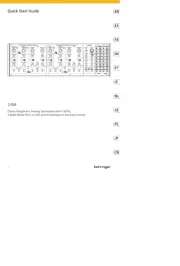
4 Juni 2025
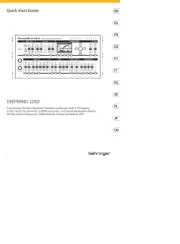
1 April 2025
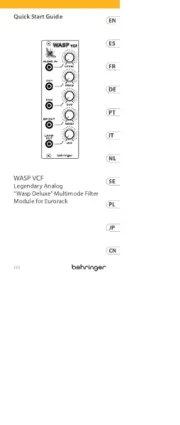
1 April 2025
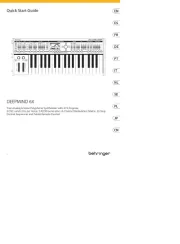
1 April 2025
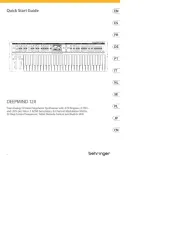
1 April 2025
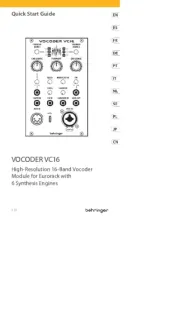
1 April 2025
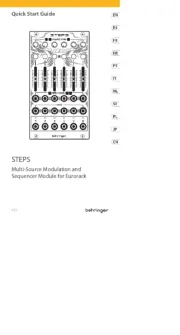
30 Januari 2025

2 Januari 2025
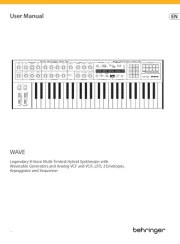
2 Januari 2025

2 Januari 2025
Handleiding Synthesizer
- Future Retro
- Arturia
- Kodamo
- Jomox
- Roland
- Casio
- Native
- ELTA Music
- Pioneer
- Modal Electronics
- Sequential
- Elektron
- Waldorf
- Moog
- Fred's Lab
Nieuwste handleidingen voor Synthesizer
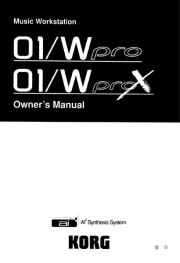
3 September 2025
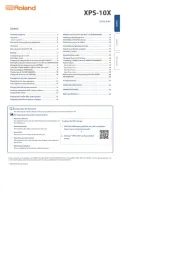
1 September 2025

30 Juni 2025
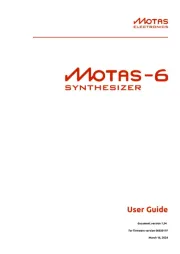
10 Juni 2025
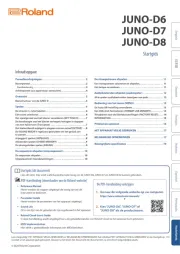
16 Mei 2025
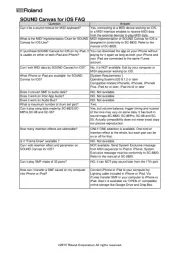
13 Mei 2025
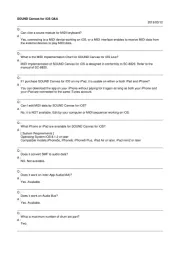
13 Mei 2025
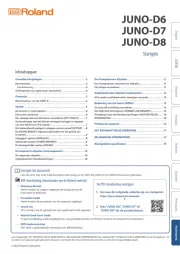
12 Mei 2025
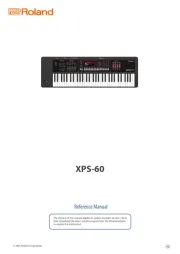
12 Mei 2025
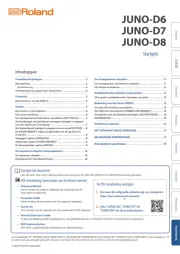
12 Mei 2025